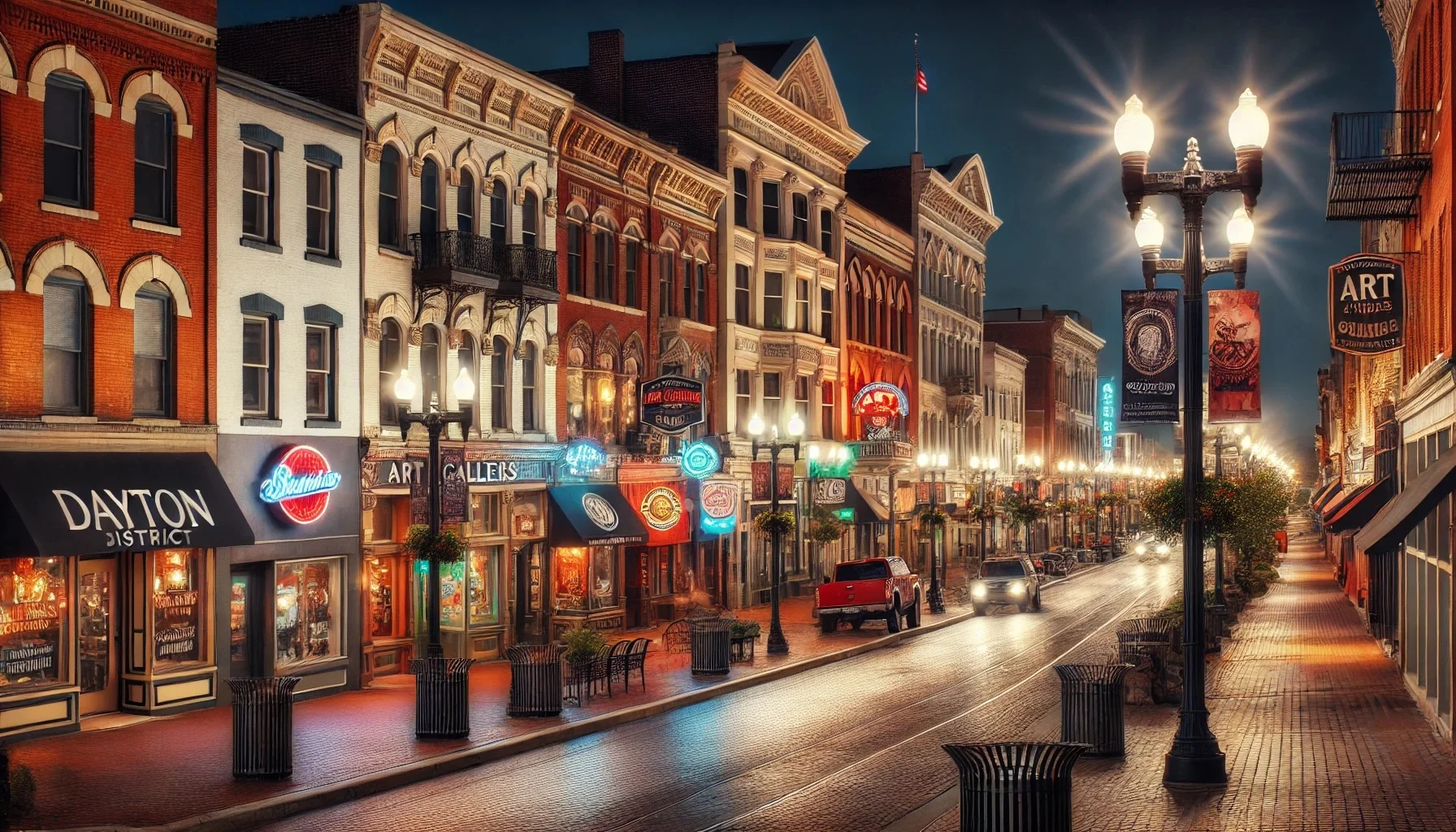
The Dayton Shooting
by: The Calamity Calendar Team
August 4, 2019
A Night Like Any Other
The Oregon District in Dayton, Ohio, is a popular hub for nightlife, known for its eclectic mix of bars, restaurants, and entertainment venues. On the night of August 3, 2019, the area was bustling with activity as locals and visitors alike enjoyed a warm summer evening out. Little did they know, tragedy was about to strike.
The Unthinkable Begins
1:05 AM: The clock had just struck past midnight, and the crowds in the Oregon District were still lively. Among them was Connor Betts, a 24-year-old man who would soon turn a night of fun into a scene of chaos and terror. Armed with a .223-caliber rifle equipped with high-capacity magazines, Betts started his deadly rampage near the entrance of Ned Peppers Bar.
Seconds of Terror
1:06 AM: In a span of just 32 seconds, Betts fired at least 41 rounds, targeting the unsuspecting patrons around him. The sudden burst of gunfire sent people scrambling for cover, but the rapid assault left little time for escape. By the time Betts was neutralized, he had killed nine people, including his own sister, and wounded twenty-seven others.
Thanks for subscribing!
A Swift and Heroic Response
The Dayton Police Department had officers patrolling the area that night, a presence that proved crucial. Within moments of the first shots, six officers confronted Betts. Their prompt action, confronting and shooting him just 32 seconds after the attack began, undoubtedly saved many lives.
1:07 AM: The shooter was down. The nightmare, however, was far from over. The aftermath left a community in shock and mourning.
The Aftermath and Impact
The immediate aftermath saw the Oregon District’s usually vibrant streets turn into a scene of sorrow. Nine lives were lost, and twenty-seven more were forever changed by the injuries they sustained. Despite the horror, the physical property damage was minimal, confined to the small area where the attack took place.
The local economy, heavily reliant on the bustling nightlife of the Oregon District, faced a temporary decline. Patrons stayed away, their confidence shaken by the recent violence. Businesses, already reeling from the emotional toll, now faced economic challenges as well.
Community and Recovery
In the days following the shooting, the Dayton community came together in an outpouring of support and solidarity. Vigils and memorials were held to honor the victims, their names etched into the collective memory of a grieving city. Community groups and local organizations offered assistance to those affected, helping to navigate the emotional and psychological aftermath of such a traumatic event.
Calls for Change
The Dayton shooting reignited the national debate on gun control. Ohio Governor Mike DeWine proposed several measures aimed at preventing such tragedies in the future. These included enhanced background checks and a “red flag” law, which would allow authorities to remove firearms from individuals deemed a threat to themselves or others.
Understanding the Motive
In the wake of the shooting, the FBI and local authorities launched a comprehensive investigation into Connor Betts’s background. What they found was a history of concerning behavior and mental health issues. Despite this, no clear motive for the shooting was established, leaving many questions unanswered.
Moving Forward
As time passed, the immediate shock of the Dayton shooting began to fade, but its impact remained. The focus shifted to the broader implications for gun control policies and the effectiveness of rapid police response in active shooter situations. The heroism displayed by the Dayton police officers on that fateful night became a benchmark for other cities to strive for in their emergency response strategies.
Conclusion
The Dayton shooting was a stark reminder of the fragility of life and the ever-present threat of gun violence. It highlighted the need for swift action, both in response to immediate threats and in addressing the root causes of such tragedies. As the community continues to heal, the memories of those lost serve as a poignant call to action, urging society to find solutions that can prevent future acts of violence.
In the face of unimaginable horror, the resilience and solidarity of Dayton’s residents shine through, a testament to the strength of the human spirit. The hope is that through remembrance and reform, such a night of terror will never be repeated.
Stay in the Loop!
Become a Calamity Insider and get exclusive Calamity Calendar updates delivered straight to your inbox.
Thanks! You're now subscribed.